#i.n.r.i.
Explore tagged Tumblr posts
Text
Sarcófago - I.N.R.I.
#Sarcófago#I.N.R.I.#self titled#1987#Black/Thrash/Death Metal#Death Lust Alcohol Satan Anti-Christianity#Brazil
10 notes
·
View notes
Photo


Katsuhiro Ōtomo, I.N.R.I. (1981)
42 notes
·
View notes
Audio
Sarcófago - The Last Slaughter
13 notes
·
View notes
Text
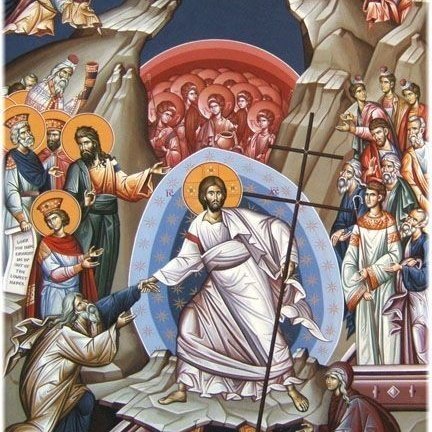
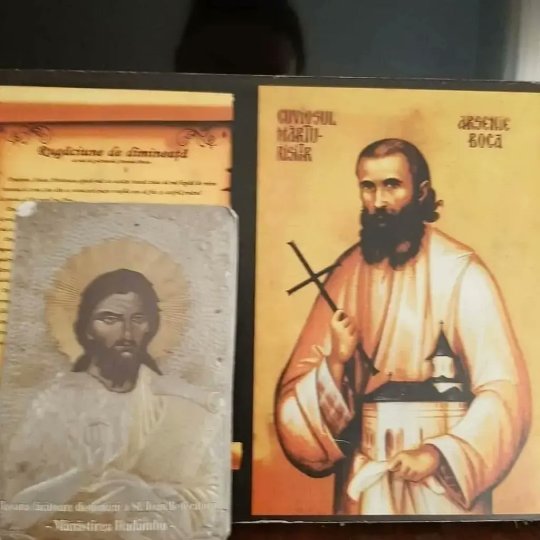
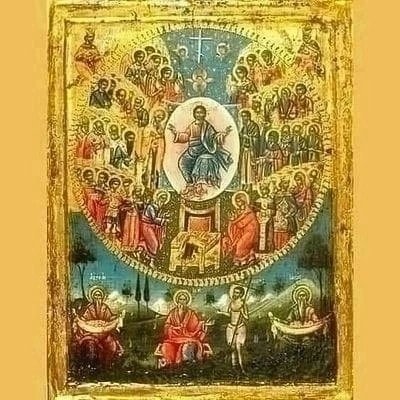







1 note
·
View note
Text
I just tried a new patch method, completely spur of the moment, winging it kind of thing, but I think it turned out pretty well.
Instead of cutting a stencil, I had the idea to trace the logo on paper and try to transfer the tracing to fabric.
First I flipped the logo in my phone, then taped a piece of paper over it, which made the phone act like a light box, and I was able to trace super easily. After I removed the paper from my phone I went over all the lines again to make it as clear as possible, which gave me this.

I put it face down onto some white fabric, and shaded all over the back to transfer the pencil, which worked way better than I thought it would. Then I started filling it in with black fabric paint and the smallest brush I had.


And the final result!

This is the logo I traced from. (Edit: I realise looking at this just now that I totally missed the bottom part of the second "A", will fix that!)

Obviously it's slightly less detailed and not as clean and crisp as the original, but I think it's still clearly recognisable as the same logo. And part of the charm of handmaking your own patches is that they'll be a little rough around the edges 😁
For those not aware, Sarcófago are an extreme metal band from Brazil, formed in 1985, and were highly influential in shaping the Black Metal sound as part of its "first wave". They won't be to most people's taste, but if you happen to be into extreme metal and have never heard them before I would urge you to give their first album I.N.R.I. a try.
youtube
#patch jacket#patches#heavy metal#extreme metal#black metal#first wave black metal#sarcofago#diy#diy patches#battle jacket#battle vest#heavy metal aesthetic#Youtube#diy craft#diy jacket#thrash metal#80s thrash
41 notes
·
View notes
Text


I.N.R.I: De Mysteriis Rosæ Rubeæ et Aureæ Crucis, by Frater Achad (Charles Robert Stansfeld Jones), 1924 “A rose within the night. The dark-red rose so deep within the night.”
Gertrud Kolmar, from Dark Soliloquy: The Selected Poems; “Rose In The Night,”
The Rose Cross A rose cross thought to have been made by George Alexander in the 1970s. It is a replica of those worn by adepts in the Rosae Rubae et Aureae Crucis, the inner order of the Hermetic Order of the Golden Dawn. The rose cross is a lamen (magical pendant) worn over the heart by members during important operations. Its design is influenced by Rosicrucian legend, the Kabbalah and by Moina and Samuel Liddell MacGregor Mathers’ symbolic application of colour. The red rose and the cross of gold represents a reconciliation of divinity and humanity, which forms the basis of the glyph. A visitor to the museum explained that traditionally the rose cross is to be made and consecrated by its owner unassisted, and must not be touched by another person after consecration.
83 notes
·
View notes
Text
Now at IPR - Ready Play Games: I.N.R.I.

The plague knocks on the door of this small convent in 16th century Austria.
https://www.indiepressrevolution.com/xcart/Ready-Play-Games-INRI.html
9 notes
·
View notes
Text


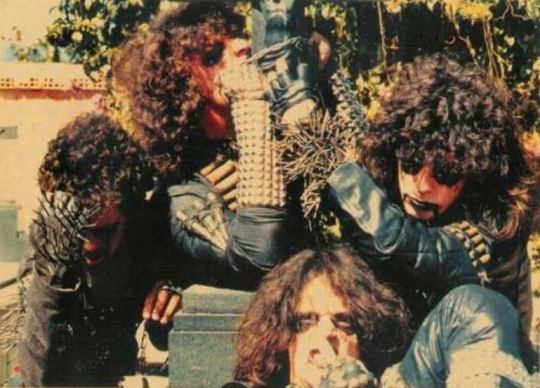
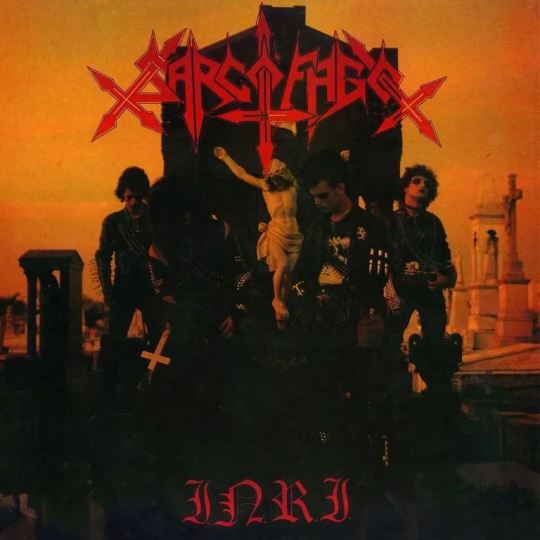
Sarcofago Brazil Band photos and their 1987 LP "I.N.R.I."
107 notes
·
View notes
Text

Pictured: I.N.R.I., released in 1987
14 notes
·
View notes
Text
Sometimes I wonder if Pilate really knew what he had done.
He put I.N.R.I. (IESVS NAZARENVS REX IVDÆORVM) on that cross despite the protests of the Pharisees.
In John 19-22 it says
"19 And Pilate wrote a title, and put it on the cross. And the writing was Jesus Of Nazareth The King Of The Jews. 20 This title then read many of the Jews: for the place where Jesus was crucified was nigh to the city: and it was written in Hebrew, and Greek, and Latin. 21 Then said the chief priests of the Jews to Pilate, Write not, The King of the Jews; but that he said, I am King of the Jews. 22 Pilate answered, What I have written I have written."
5 notes
·
View notes
Text

Lorenzo Veneziano
Tríptico portátil de la Crucifixión
hacia 1370 - 1375
Temple y oro sobre tabla. Tabla central: 83,6 x 30,7 cm; alas laterales: 83 x 15 cm
Museo Nacional Thyssen-Bornemisza, Madrid
Nº INV. 228 a-e (1979.1.1-3)
Este tríptico, con su atribución actual, salió a subasta en Londres en 1976, siendo adquirido para la colección de Carlo de Carlo con sede en Florencia. La pintura entró en la colección Thyssen-Bornemisza unos años más tarde, en 1979, procedente del mercado de arte italiano. Según los datos recogidos en el catálogo de la subasta en Londres, la obra procedía de la colección del conde Alexander Schouvaloff de San Petersburgo, donde estaba a mediados del siglo XIX. El tríptico pasó en herencia por varias generaciones de la familia y se fotografió en la década de 1890, cuando formó parte de la decoración de una de las salas del domicilio de Alexander von Benckendorff. Pallucchini, en 1964, fue el primero en atribuir la pintura a Lorenzo Veneziano, que previamente, en 1960, se había dado a conocer al formar parte de una exposición en la Royal Academy de Londres, en la que se catalogó como de un anónimo veneciano, fechada hacia 1370. Salvo Pope-Hennessy, que la consideró de un miniaturista anónimo próximo a Lorenzo Veneziano, la crítica ha sido unánime con su autor, pese a las dificultades que existen para compararla con otros trabajos del artista en los que empleó una escala mayor.
El tríptico conserva su marco original, aunque con algunas pérdidas en su decoración y en la madera tallada con la que se remata. Lorenzo Veneziano dedica la tabla central a La Crucifixión y la predella de este pequeño altar a cuatro santos que de izquierda a derecha son: Santa Lucía que porta un pequeño recipiente y los ojos; un santo, sin identificar, que bendice con una mano mientras que con la otra sostiene un libro; Santa Elena con la cruz apoyada en uno de sus hombros; y Santa Margarita, que pisa el dragón y lo conduce con unas bridas. La Crucifixión mantiene una ordenación tradicional con la Magdalena a los pies y los dos grupos distribuidos a ambos lados de la cruz, con los soldados y fariseos en el fondo y las figuras de María, las santas mujeres y san Juan en primeros términos. Lorenzo Veneziano concluye el episodio central de la Pasión con dos ángeles y un pelícano que alimenta sus crías con su sangre y que ha instalado en un nido justo debajo de la cartela con la leyenda «i.n.r.i.». El pelícano, según El Fisiólogo, llora la muerte de sus crías durante tres días, momento en el que la madre se desgarra el pecho y salpica con su sangre a sus polluelos que vuelven a la vida; este motivo es un símbolo cristológico.
La tabla lateral izquierda presenta de arriba a abajo: El ángel de la Anunciación, La Trinidad, La triple Ana y La estigmatización de san Francisco; y en la derecha: La Virgen de la Anunciación, El Bautismo de Cristo, La conversión de san Pablo y tres santos: San Antonio de Padua, san Antonio Abad y san Luis de Toulouse. En las puertas exteriores, dibujados a punta del pincel y pigmento claro, los santos Santiago el Mayor y san Cristóbal con el Niño en sus hombros. Las figuras se insertan en el fondo de oro con los perfiles bien definidos, y en ellas se analizan con cuidado, pese a sus reducidas dimensiones, sus posturas y sus gestos, como puede observarse en La Virgen de la Anunciación que, sorprendida por el ángel hacia el que se gira, ademán de san Pablo al caer de su caballo. El tríptico está fechado por Boskovits hacia 1370-1375.
Mar Borobia.
Información e imagen de la web del Museo Nacional Thyssen-Bornemisza.
3 notes
·
View notes
Text

𝔖𝔞𝔯𝔠ó𝔣𝔞𝔤𝔬 ⸸⛧
11 notes
·
View notes
Text
巴西传奇黑死\黑敲击乐队石棺Sarcófago全部专辑分享
巴西传奇黑死\黑敲击乐队石棺Sarcófago全部专辑分享 https://b23.tv/gHV9OrG
3 notes
·
View notes
Text

Sarcófago - I.N.R.I 06/08/1987
#metalcultbrigade#metal#artists on tumblr#art#death metal#brazilian death metal#sarcofago#80's#80s music
6 notes
·
View notes
Text

"Pieta" by Bettina Rheims from "I.N.R.I." photo album.
2 notes
·
View notes
Text

I.N.R.I: De Mysteriis Rosæ Rubeæ et Aureæ Crucis, by Frater Achad (Charles Robert Stansfeld Jones), 1924
8 notes
·
View notes